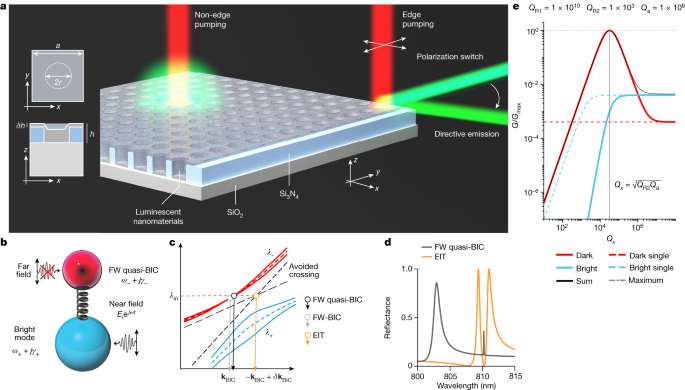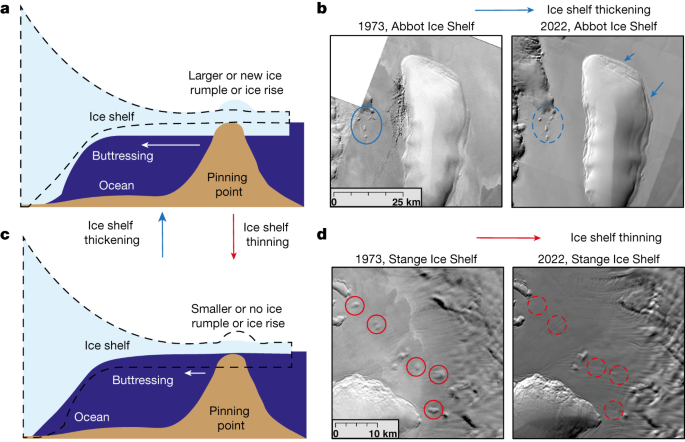2024-02-22 シンガポール国立大学(NUS)
<関連情報>
- https://news.nus.edu.sg/manipulating-light-increased-photon-upconversion/
- https://www.science.nus.edu.sg/blog/2024/02/22/photon-upconversion-steering-light-with-supercritical-coupling/
- https://www.nature.com/articles/s41586-023-06967-9
連続体の超臨界束縛状態による巨大アップコンバージョンを直接観測 Directive giant upconversion by supercritical bound states in the continuum
Chiara Schiattarella,Silvia Romano,Luigi Sirleto,Vito Mocella,Ivo Rendina,Vittorino Lanzio,Fabrizio Riminucci,Adam Schwartzberg,Stefano Cabrini,Jiaye Chen,Liangliang Liang,Xiaogang Liu & Gianluigi Zito
Nature Published:21 February 2024
DOI:https://doi.org/10.1038/s41586-023-06967-9

Abstract
Photonic bound states in the continuum (BICs), embedded in the spectrum of free-space waves1,2 with diverging radiative quality factor, are topologically non-trivial dark modes in open-cavity resonators that have enabled important advances in photonics3,4. However, it is particularly challenging to achieve maximum near-field enhancement, as this requires matching radiative and non-radiative losses. Here we propose the concept of supercritical coupling, drawing inspiration from electromagnetically induced transparency in near-field coupled resonances close to the Friedrich–Wintgen condition2. Supercritical coupling occurs when the near-field coupling between dark and bright modes compensates for the negligible direct far-field coupling with the dark mode. This enables a quasi-BIC field to reach maximum enhancement imposed by non-radiative loss, even when the radiative quality factor is divergent. Our experimental design consists of a photonic-crystal nanoslab covered with upconversion nanoparticles. Near-field coupling is finely tuned at the nanostructure edge, in which a coherent upconversion luminescence enhanced by eight orders of magnitude is observed. The emission shows negligible divergence, narrow width at the microscale and controllable directivity through input focusing and polarization. This approach is relevant to various physical processes, with potential applications for light-source development, energy harvesting and photochemical catalysis.



